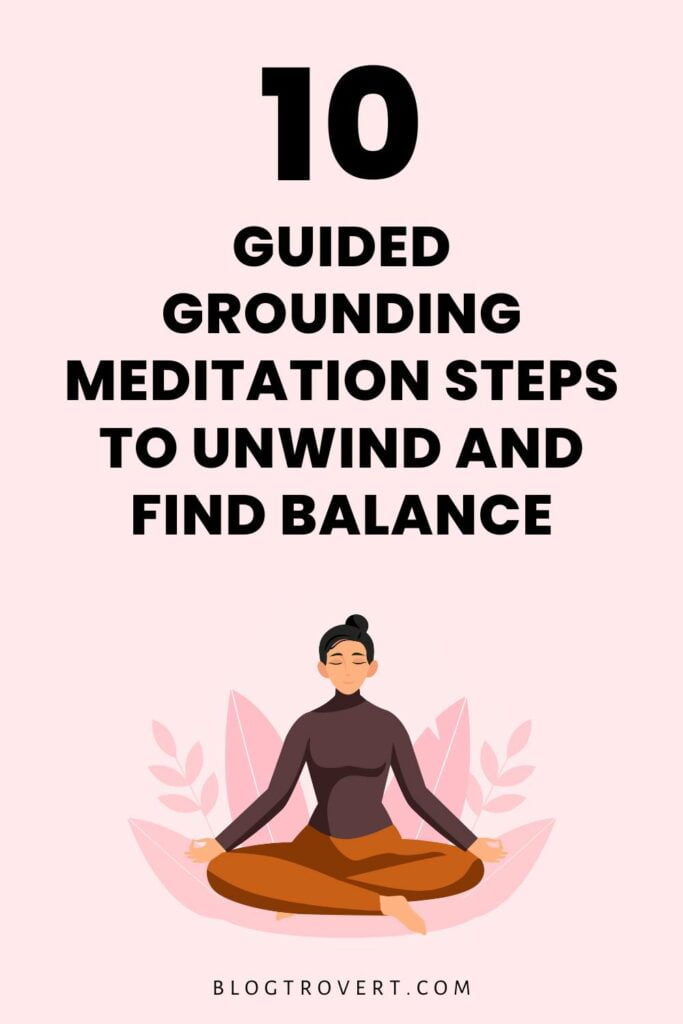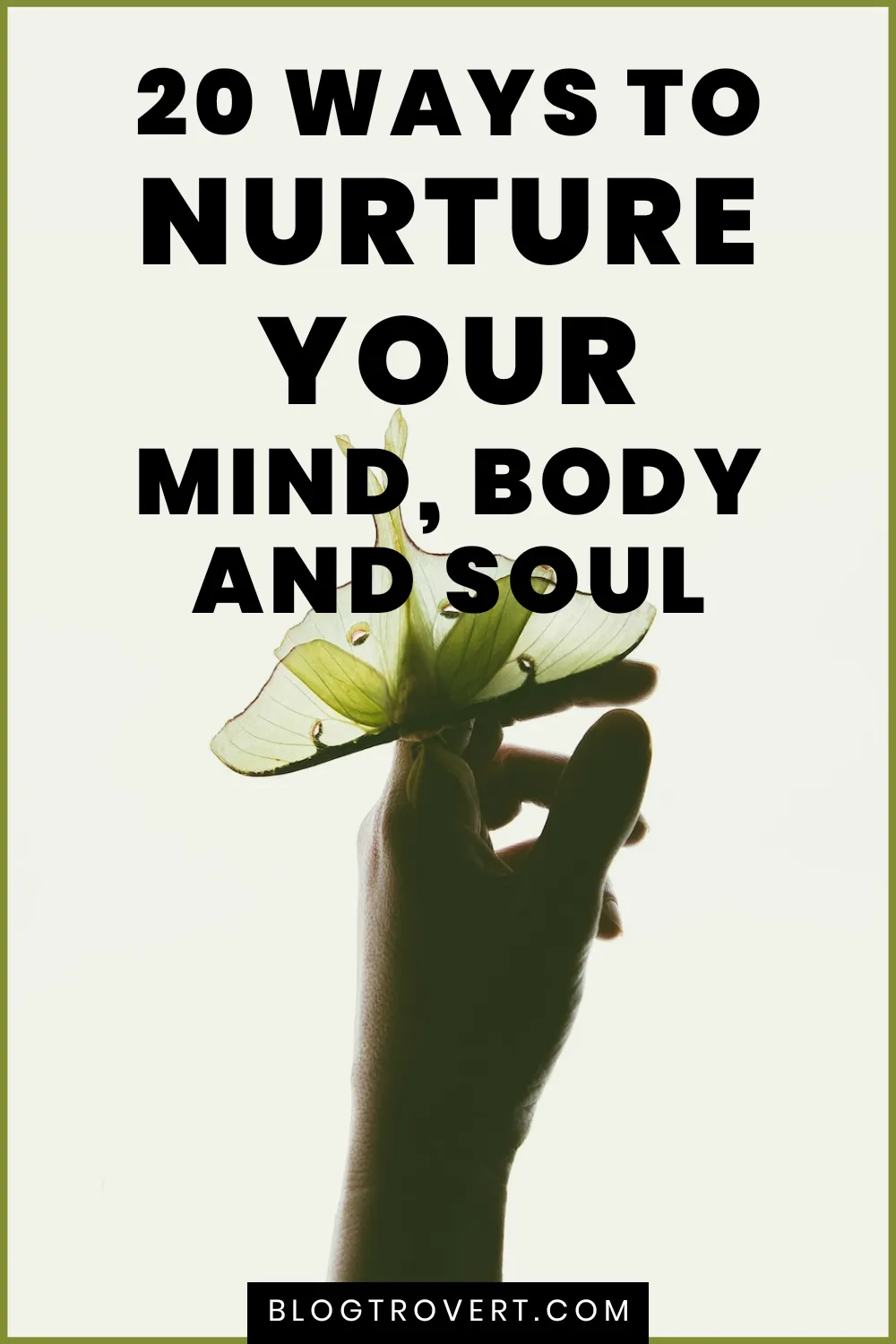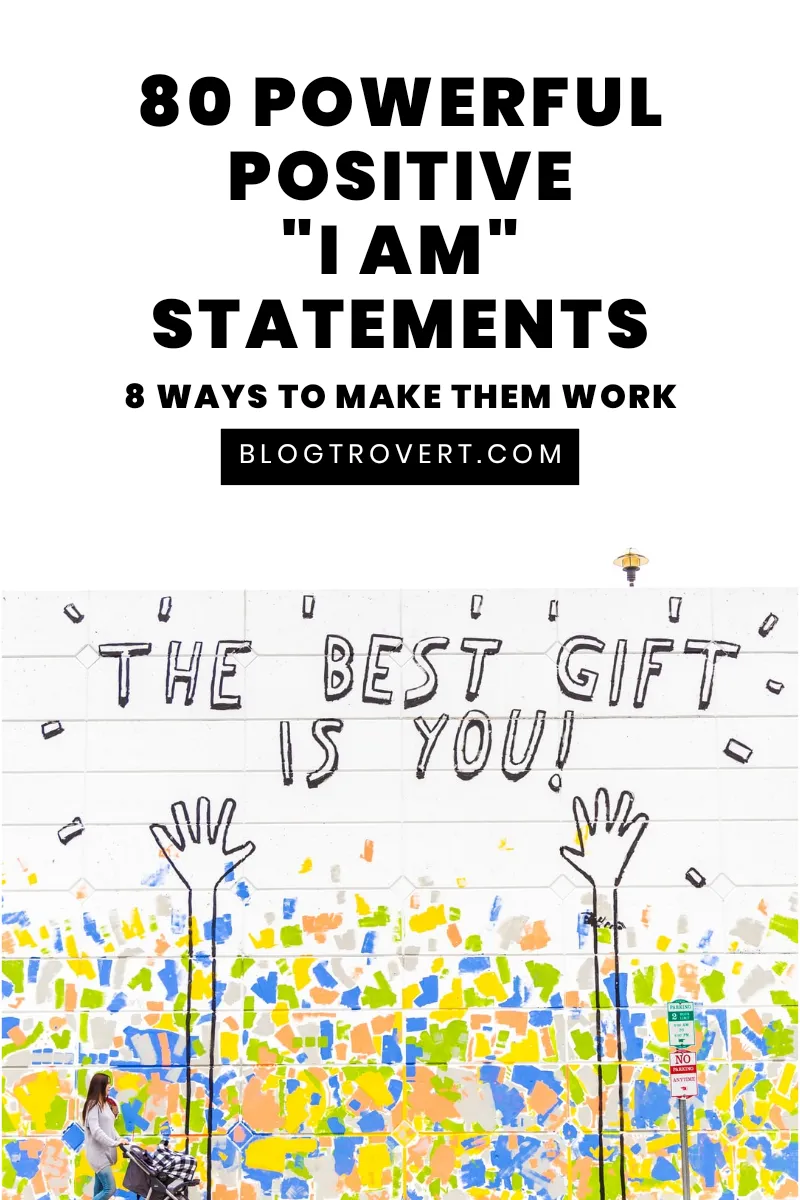Sometimes, it’s challenging to find time to unwind and connect with ourselves. With so many distractions and demands on our time, it’s easy to become overwhelmed and unbalanced. (That’s where grounding meditation can make a significant difference.)

Many people have used this ancient technique for centuries to find inner peace and balance.
In this blog post, we will explore the benefits of grounding meditation and how it can help you unwind, find balance, and cultivate a deeper sense of self-awareness.
What is “grounding meditation?”
Grounding meditation is a powerful practice that helps us reconnect with the present moment, promoting relaxation and balance in our lives. It involves connecting with the earth’s energy to release negative emotions and promote a sense of calm and balance.
Through the use of visualization and deep breathing, grounding meditation can help to soothe the mind, body, and spirit, allowing you to let go of stress and tension.
How grounding meditation connects us to the present moment
Grounding meditation uses techniques such as breathwork, visualization, and body awareness to anchor our attention to the present moment. It helps us let go of worries about the past or future, promoting a deep sense of presence and mindfulness.
The role of breathwork in grounding meditation
Breathwork plays a crucial role in grounding meditation as it helps regulate our nervous system, inducing a state of relaxation. By focusing on our breath, we can slow down and deepen our breaths, activating the body’s natural relaxation response.
If you struggle with anxiety, stress, or simply want to connect with your inner self on a deeper level, you will find this meditation technique very useful.
Join us as we take a journey of inner peace and relaxation through grounding meditation.
Grounding meditation to unwind and find balance
Sit or lie comfortably
In order to begin the grounding meditation, it is important to find a comfortable and safe space to sit or lie down. This space should allow for relaxation and a sense of ease to settle in, allowing the mind and body to fully unwind.
It doesn’t matter if you choose to sit in a chair, cross-legged on a cushion, or lie down on a yoga mat, ensure you adjust your posture and find a position that feels natural and comfortable for your body. A comfortable physical position will help you focus your attention on the present moment and the meditation practice ahead.
Close your eyes gently
The second step in our grounding meditation is to close your eyes gently. This step is crucial in helping you unwind and find balance, as it allows you to shut out external stimuli and focus solely on your internal experience.
Closing your eyes creates a space for you to relax and let go of any tension or stress you may hold onto. Having your eyes shut can also help you connect with your breath and move towards a state of inner peace and calm.
As you close your eyes, take a deep breath and allow yourself to sink deeper into a state of relaxation. Remember not to open your eyes throughout the meditation to fully engage with the experience and reap the benefits of this grounding practice.
Take a deep breath
In order to fully unwind and find balance, it is important to take a moment to focus on your breath. Taking a deep breath is a simple yet effective way to ground yourself and bring your attention back to the present moment.
The act of deep breathing can help to calm the nervous system and reduce feelings of stress and anxiety. To begin, find a comfortable seated or lying position and place one hand on your belly and one hand on your chest. Inhale deeply through your nose, feeling your belly expand with air.
Hold the breath for a few seconds, then slowly exhale through your mouth, feeling your belly deflate. Repeat this process several times, allowing yourself to fully immerse in the sensation of your breath.
Focusing on your breath can help you cultivate a sense of calm and clarity that brings a sense of balance and peace to your day.
Feel your breath move
The fourth step in our grounding meditation to unwind is to feel your breath move. This step is all about becoming mindful of your breath and how it moves in and out of your body.
Begin by taking a few deep breaths, inhaling slowly through your nose and exhaling through your mouth. Pay attention to the sensation of the air moving in and out of your body, and how your chest and abdomen expand and contract with each breath.
As you continue to breathe, focus on slowing down your breath and making it deeper. This can help to calm your mind and reduce stress and anxiety. When you feel ready, you can move on to the next step in this grounding meditation.
Focus on your body
The fifth step in this Grounding Meditation is to focus on your body. Take a few moments to connect with your physical self, noticing any sensations or areas of tension. Try to let go of any judgments or criticisms you may have about your body, and simply observe it with compassion and acceptance.
You can bring your awareness to your breath and the way it moves through your body, or you can scan your body from head to toe, noticing any areas of discomfort or tightness.
Release all tension
It is important to let go of any physical or emotional tension that may be present in your body. Begin by bringing awareness to any areas of tightness or discomfort, and take a deep breath as you exhale, release and let go of any tension.
Scan your body from head to toe, noticing any areas that may be holding onto tension, and release it with each exhale. As you release tension from your body, also release any worries or stress that may be weighing on your mind.
Allow yourself to fully relax and surrender to the present moment. With each breath, feel yourself becoming more and more relaxed and at ease. This step is essential in achieving a state of deep relaxation and inner peace.
Inhale through your nose
Inhaling through your nose is an important step in grounding meditation. Breathing in through your nose filters and warms the air, preparing it to exhale through your mouth.
Inhaling through your nose during meditation helps to slow down your breath and brings you into a state of relaxation. This is helpful in reducing stress and anxiety, allowing you to stay calm and balanced throughout.
As you practice this meditation, be sure to focus on your breath and allow yourself to fully inhale through your nose, taking in the fresh, calming air.
Exhale through your mouth
As you exhale, imagine that you are releasing any negative emotions or thoughts that may be weighing you down. After taking a deep breath in through your nose, hold it for a moment, and then exhale slowly through your mouth.
Repeat this process several times, allowing your breath to become deeper and more relaxed with each exhale. The act of exhaling through your mouth can help you feel more grounded and centered, leading to a greater sense of inner peace and tranquility.
Center your thoughts
Centering your thoughts is a critical step in grounding meditation. It involves focusing your mind and bringing your attention to the present moment. It is natural for our minds to wander, and it’s challenging to stay present when you are feeling stressed or overwhelmed.
Centering your thoughts trains your mind to focus on the current moment and let go of any distracting thoughts.
One effective technique to center your thoughts is to focus on your breath. Take slow, deep breaths and imagine yourself inhaling calmness and exhaling any tension or stress. With each breath, you can feel yourself becoming more centered and grounded.
This technique can help you unwind and find balance, allowing you to approach challenges with a clearer and more focused mind.
Stay present in the moment
The tenth step in our Grounding Meditation to Unwind and Find Balance is to stay present in the moment. This step is vital in achieving a state of deep relaxation and grounding.
Staying present in the moment means being fully aware of your surroundings, your body, and your thoughts without judgment or distraction. It involves letting go of any worries or stress from the past or the future and focusing on the present moment.
This practice can help you stay grounded and centered, allowing you to fully experience the benefits of the previous steps in the meditation. By staying present in the moment, you can cultivate a sense of peace and clarity that will carry with you beyond the meditation practice and into your daily life.
Conclusion
This grounding meditation is a powerful tool to help unwind and find balance amidst the chaos of everyday life. Take the time to focus on your breath, visualize grounding elements, and connect with your inner self, so you can cultivate a sense of calm and centeredness that you will carry with you throughout the day.
Whether you are looking to reduce stress, find inner peace, or simply take a break from the world around you, this meditation can provide a much-needed respite and help you tap into your own inner strength and resilience.
With practice and dedication, you can develop a deeper sense of mindfulness and clarity that can help you navigate life’s challenges with greater ease and grace.




